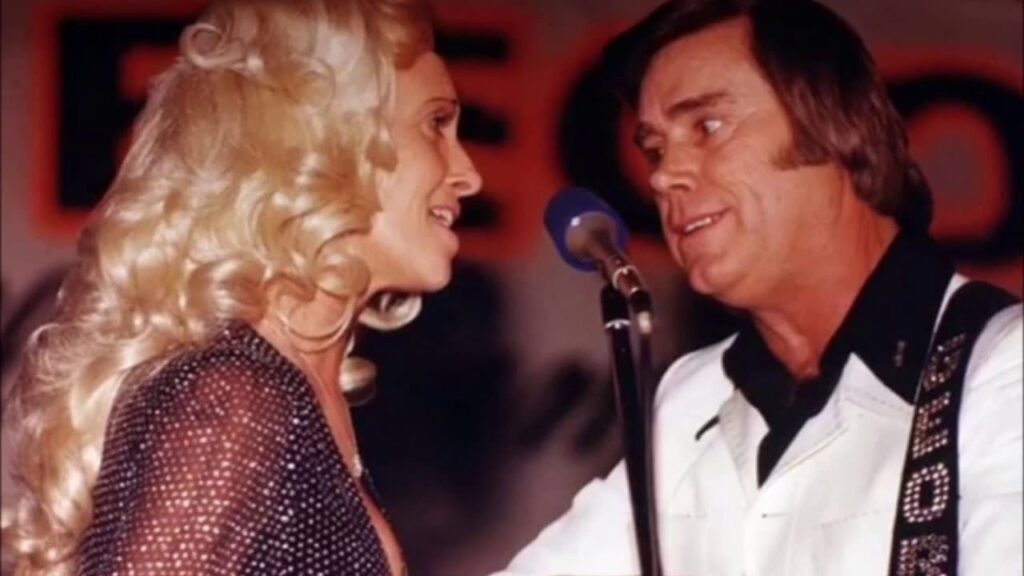
A quiet mirror held to a fading love
When George Jones and Tammy Wynette joined voices on “Someone I Used to Know”, they captured the tender ache of a shared past slipping into memory. The track appears on their 1971 duet album We Go Together, which peaked at No. 3 on the U.S. Billboard Country Albums chart.
In the arc of their professional and personal relationship, this song carries a certain weight. Though “Someone I Used to Know” was not released as a standalone single to chart prominence, the composition itself had been recorded earlier by George Jones solo under the title A Girl I Used to Know in 1962, and that version peaked at No. 3 on the U.S. Country chart. The duet version thus revisits a familiar theme—past affection, change, memory—but gains additional resonance through the chemistry of Jones and Wynette together.
The background of the song is worthy of reflection. Written by Jack Clement, “A Girl/I Used to Know” originally dealt with the narrator remembering a former companion now distant and changed. When Jones and Wynette recorded it together, they layered this sentiment with a duet intimacy: two voices weaving the same memory, each acknowledging the loss in slightly different shades. They take turns singing lines like, “There’s a picture that I carry, one we made some time ago… I say ‘just someone I used to know.’”
From the first gentle strum of guitar, the track invites older-ears to recall evenings when radio gently filled the room, when the world slowed and hearts talked in sub-tones. Jones’s baritone, carrying the scars of countless heartbreaks, complements Wynette’s poignant high register. In their phrasing, there is not anger or regret screaming—but a subtle resignation, a graceful “so it was” rather than “why did you?” This nuance, this quiet subtlety, is precisely what makes the song linger in memory.
Musically the arrangement is restrained yet rich. No bold flourishes dominate; instead, soft steel guitar, piano fills and a steady rhythm gently support the vocals. The production reflects the early 70s country sound under producer Billy Sherrill, who married traditional country instrumentation with polished studio clarity. The atmosphere created is reflective, slightly smoky—as though one were sitting on a front porch watching shadows lengthen.
What gives this song its deeper meaning is more than the sadness of love gone—it’s the relatability of once-shared dreams now separate, the photos in old albums, the “what if” that almost seems kinder than “what now”. When Wynette and Jones sing, “I don’t tell them how lost I am without you, I say just someone I used to know,” the line resonates not only for lovers parted but for anyone who has carried the void of absence quietly.
For listeners who have lived many seasons, the song becomes an auditory memento. It reminds one of times when relationships shifted—not always violently, but subtly. The walk of life moves on, the other person drifts away, and the memories become the tender landscape we revisit. The duet form adds a layer: two people together reflecting the past, even if their paths diverge.
In the catalogue of Jones and Wynette—two giants of country music whose personal lives intertwined and unraveled—the song stands out as a moment of honest reflection. It doesn’t hide the fact that love changes; it embraces it. It doesn’t promise reunion; it acknowledges departure. And yet, in doing so, it offers comfort: that the shared moment, though past, remains significant.
In conclusion, “Someone I Used to Know” is more than a track on a 1971 album—it is a soft echo of what was, a farewell sung in two voices entwined even as they drift. It holds within it the grace of acknowledgment—that we let go, we remember, and a piece of us continues. When the music fades, the memory lingers, and in that lingering resides the gentle truth of human hearts.